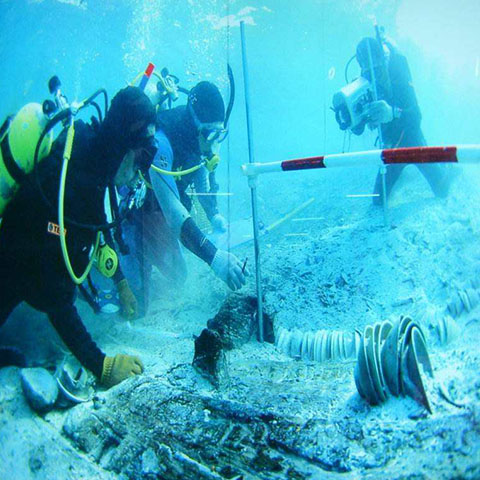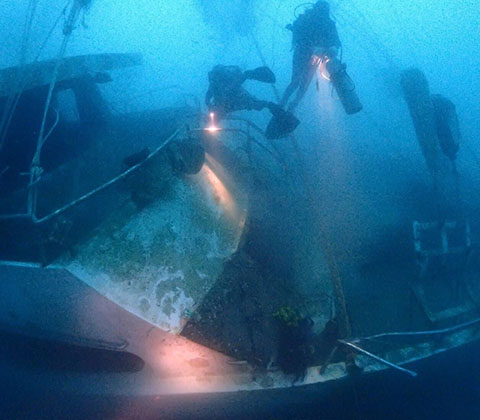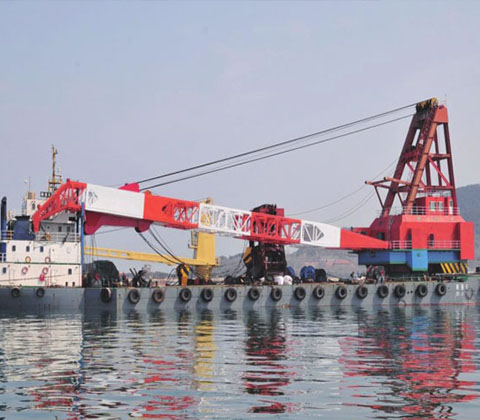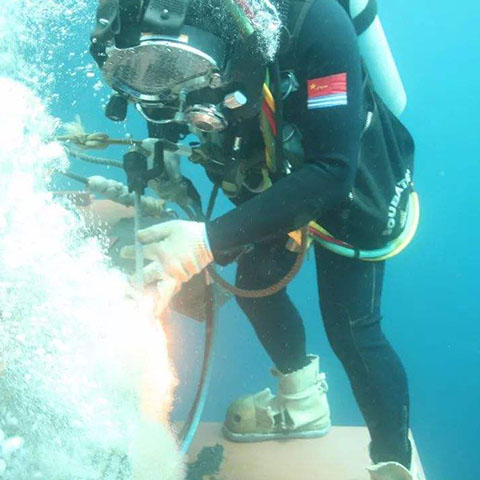Steps of underwater exploration
1. Underwater search: two search team members in each group enter the water in the order planned in advance. The team member who arrives at the bottom table first must wait until another team member arrives safely before starting the search plan. Straight line search and rectangular search require two (Group) team members to be located on the left and right sides of the guide rope respectively; Circular search requires two team members to distinguish the internal and external positions. The team members in the outer circle must keep diving in the direction of the external centrifugal force and grasp the size of the search radius. The team members in the inner side can search parallel to the team members in the outer side or in the shape of "zigzag" according to half the distance of the expanded search radius.
2. Search method: select the appropriate search method mainly based on underwater visibility and bottom surface landform. There are three commonly used methods: visual inspection, unarmed exploration and steel drill probe detection. Visual inspection method is mainly applicable to better or general underwater visibility, undulating reef bottom or undulating sand dune bottom surface landform. Visual inspection is the most frequently used method, which is widely used in the investigation of Xisha sea area and the general survey of coastal cultural relics in Guangdong, Zhejiang, Fujian, Shandong and other provinces. Freehand exploration is mainly applicable to the landform of sediment bottom surface with poor or almost zero underwater visibility and small fluctuation. It is mainly used for some archaeological investigation projects in Ningbo Xiangshan Port, Wenzhou Dongtou sea area, Fuzhou Pingtan sea area and other places. The use of steel brazed probe detection is mainly based on remote sensing geophysical exploration data or other data, which clearly shows that there are residual deposits buried under the underwater sediment layer, but it can not be judged only from the surface of the underwater, so as to understand the burial conditions below the surface of the underwater. It is mainly used for the investigation of dongguwan shipwreck site in Dongshan, Zhangzhou, and the investigation of Yuan Dynasty shipwreck site of Dalian island I in Fuzhou.

3. Site determination: because the current underwater search object is mainly the wreck site, the determination of underwater sites is mainly based on the following two aspects. First, confirm whether there are abnormal bulges (hull) or scattered cargoes on the bottom table of the search area, and bring underwater relevant information to the water surface through sample collection (usually limited to 50 pieces); Then, based on the relevant information, analyze the samples taken out of the water surface, and then conduct the next group of search and survey to confirm the existence of the hull, the central area or the stacking form and distribution area of the cargo. If only a few or sporadic artifacts (usually less than 5 pieces) are scattered, and no hull or distribution range is found, they can only be tentatively determined as underwater relic points for further exploration in the future. Suizhong sandaogang shipwreck site, Pingtan wanjiao I shipwreck site, Nanhai I shipwreck site and Dalian island I shipwreck site, as well as the sites found in the general survey of cultural relics in coastal provinces, are mostly determined based on these two criteria.
4. Site location: in case of any important discovery during the underwater search, immediately send a signal to the companion to stop the search and jointly confirm the relic phenomenon. Move the caisson to this position or open the buoyancy bag to set up a buoy to carry out underwater positioning, send the positioning signal to the surface staff, and the surface staff will use the GPS system to make positioning records.
- Last:Nothing;
- Next:Preparation before underwater fishing and hoisting
-
Environmental requirements for u [2022-05-16]
Underwater cutting is another underwater project. With the rapid development of economy, underwater cutting is more and more widely used. What are the environmental requirements of underwater cutting?
-
Steps of underwater exploration [2022-05-16]
1. Underwater search: two search team members in each group enter the water in the order planned in advance. The team member who arrives at the bottom table first must wait until another team member a
-
Preparation before underwater fi [2022-05-16]
Underwater fishing is dangerous, so it is very necessary to make preparations in advance. Before underwater fishing, please use lifting tools to prepare in advance. Next, follow Xiaobian to understand






